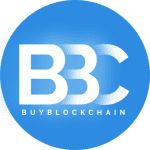[vc_row full_width=”stretch_row_content td-stretch-content” content_align_vertical=”content-vert-center” tdc_css=”eyJhbGwiOnsibWFyZ2luLXRvcCI6IjAiLCJtYXJnaW4tYm90dG9tIjoiMCIsInBhZGRpbmctdG9wIjoiNSIsInBhZGRpbmctYm90dG9tIjoiNSIsImJhY2tncm91bmQtY29sb3IiOiIjMWU3M2JlIiwiZGlzcGxheSI6IiJ9fQ==”][vc_column width=”1/4″ tdc_css=”eyJhbGwiOnsibWFyZ2luLXRvcCI6IjAiLCJtYXJnaW4tcmlnaHQiOiIwIiwibWFyZ2luLWJvdHRvbSI6IjAiLCJtYXJnaW4tbGVmdCI6IjAiLCJib3JkZXItdG9wLXdpZHRoIjoiMCIsImJvcmRlci1yaWdodC13aWR0aCI6IjAiLCJib3JkZXItYm90dG9tLXdpZHRoIjoiMCIsImJvcmRlci1sZWZ0LXdpZHRoIjoiMCIsInBhZGRpbmctdG9wIjoiMCIsInBhZGRpbmctcmlnaHQiOiIwIiwicGFkZGluZy1ib3R0b20iOiIwIiwicGFkZGluZy1sZWZ0IjoiMCIsImRpc3BsYXkiOiIifX0=”][vc_column_text tdc_css=”eyJhbGwiOnsibWFyZ2luLXRvcCI6IjAiLCJtYXJnaW4tcmlnaHQiOiIwIiwibWFyZ2luLWJvdHRvbSI6IjAiLCJtYXJnaW4tbGVmdCI6IjAiLCJib3JkZXItdG9wLXdpZHRoIjoiMCIsImJvcmRlci1yaWdodC13aWR0aCI6IjAiLCJib3JkZXItYm90dG9tLXdpZHRoIjoiMCIsImJvcmRlci1sZWZ0LXdpZHRoIjoiMCIsInBhZGRpbmctdG9wIjoiMCIsInBhZGRpbmctcmlnaHQiOiIwIiwicGFkZGluZy1ib3R0b20iOiIwIiwicGFkZGluZy1sZWZ0IjoiMCIsImRpc3BsYXkiOiIifX0=”]
[/vc_column_text][/vc_column][vc_column width=”1/2″ tdc_css=”eyJhbGwiOnsibWFyZ2luLXRvcCI6IjAiLCJtYXJnaW4tcmlnaHQiOiIwIiwibWFyZ2luLWJvdHRvbSI6IjAiLCJtYXJnaW4tbGVmdCI6IjAiLCJib3JkZXItdG9wLXdpZHRoIjoiMCIsImJvcmRlci1yaWdodC13aWR0aCI6IjAiLCJib3JkZXItYm90dG9tLXdpZHRoIjoiMCIsImJvcmRlci1sZWZ0LXdpZHRoIjoiMCIsInBhZGRpbmctdG9wIjoiMCIsInBhZGRpbmctcmlnaHQiOiIwIiwicGFkZGluZy1ib3R0b20iOiIwIiwicGFkZGluZy1sZWZ0IjoiMCIsImRpc3BsYXkiOiIifX0=”][vc_raw_html tdc_css=”eyJhbGwiOnsibWFyZ2luLXRvcCI6IjAiLCJtYXJnaW4tcmlnaHQiOiIwIiwibWFyZ2luLWJvdHRvbSI6IjAiLCJtYXJnaW4tbGVmdCI6IjAiLCJib3JkZXItdG9wLXdpZHRoIjoiMCIsImJvcmRlci1yaWdodC13aWR0aCI6IjAiLCJib3JkZXItYm90dG9tLXdpZHRoIjoiMCIsImJvcmRlci1sZWZ0LXdpZHRoIjoiMCIsInBhZGRpbmctdG9wIjoiMCIsInBhZGRpbmctcmlnaHQiOiIwIiwicGFkZGluZy1ib3R0b20iOiIwIiwicGFkZGluZy1sZWZ0IjoiMCIsImRpc3BsYXkiOiIifX0=”]JTNDaDElMjBzdHlsZSUzRCUyMnRleHQtYWxpZ24lM0ElMjBjZW50ZXIlM0IlMjBmb250LXdlaWdodCUzQSUyMGJvbGQlM0IlMjBjb2xvciUzQSUyMHdoaXRlJTNCbWFyZ2luJTNBMCUzQnBhZGRpbmclM0ExNXB4JTNCJTIyJTNFSVMlMjBSSVBQTEUlMjBBJTIwU0NBTSUzRiUzQyUyRmgxJTNF[/vc_raw_html][/vc_column][vc_column width=”1/4″][/vc_column][/vc_row][vc_row tdc_css=”eyJhbGwiOnsibWFyZ2luLXRvcCI6IjAiLCJtYXJnaW4tcmlnaHQiOiIwIiwibWFyZ2luLWJvdHRvbSI6IjAiLCJtYXJnaW4tbGVmdCI6IjAiLCJib3JkZXItdG9wLXdpZHRoIjoiMCIsImJvcmRlci1yaWdodC13aWR0aCI6IjAiLCJib3JkZXItYm90dG9tLXdpZHRoIjoiMCIsImJvcmRlci1sZWZ0LXdpZHRoIjoiMCIsInBhZGRpbmctdG9wIjoiMCIsInBhZGRpbmctcmlnaHQiOiIwIiwicGFkZGluZy1ib3R0b20iOiIwIiwicGFkZGluZy1sZWZ0IjoiMCIsImRpc3BsYXkiOiIifX0=” content=”JTNDaDElMjBzdHlsZSUzRCUyMnRleHQtYWxpZ24lM0ElMjBjZW50ZXIlM0IlMjBmb250LXdlaWdodCUzQSUyMGJvbGQlM0IlMjBjb2xvciUzQSUyMHdoaXRlJTNCbWFyZ2luJTNBMCUzQnBhZGRpbmclM0ExNXB4JTNCJTIyJTNFRlJFRSUyMCU1QmdldHRpbmdUaGVDYWxsJTVEJTIwUkVQT1JUJTIwUkVWRUFMUyUyMC4lMjAuJTIwLiUzQyUyRmgxJTNF”][vc_column width=”1/3″ tdc_css=”eyJhbGwiOnsicGFkZGluZy1yaWdodCI6IjAiLCJkaXNwbGF5IjoiIn19″][vc_raw_html tdc_css=”eyJhbGwiOnsicGFkZGluZy10b3AiOiIxNSIsInBhZGRpbmctcmlnaHQiOiIxNSIsImNvbnRlbnQtaC1hbGlnbiI6ImNvbnRlbnQtaG9yaXotcmlnaHQiLCJkaXNwbGF5IjoiIn19″]JTNDaW1nJTIwc3JjJTNEJTIyaHR0cHMlM0ElMkYlMkZ3d3cuYnV5YmxvY2tjaGFpbi5uZXQlMkZ3cC1jb250ZW50JTJGdXBsb2FkcyUyRjIwMTglMkYwMyUyRlNjYW1Db3ZlcnNyaXBwbGUucG5nJTIyJTIwc3R5bGUlM0QlMjJ3aWR0aCUzQTI0MHB4JTNCJTIyJTIwJTJGJTNFJTBB[/vc_raw_html][vc_raw_html tdc_css=”eyJhbGwiOnsicGFkZGluZy10b3AiOiIxNSIsInBhZGRpbmctcmlnaHQiOiIxNSIsImNvbnRlbnQtaC1hbGlnbiI6ImNvbnRlbnQtaG9yaXotcmlnaHQiLCJkaXNwbGF5IjoiIn19″]JTNDc2NyaXB0JTIwYXN5bmMlMjBzcmMlM0QlMjIlMkYlMkZwYWdlYWQyLmdvb2dsZXN5bmRpY2F0aW9uLmNvbSUyRnBhZ2VhZCUyRmpzJTJGYWRzYnlnb29nbGUuanMlMjIlM0UlM0MlMkZzY3JpcHQlM0UlMEElM0MhLS0lMjBiYmNfc2lnbnVwXzElMjAtLSUzRSUwQSUzQ2lucyUyMGNsYXNzJTNEJTIyYWRzYnlnb29nbGUlMjIlMEElMjAlMjAlMjAlMjAlMjBzdHlsZSUzRCUyMmRpc3BsYXklM0FibG9jayUyMiUwQSUyMCUyMCUyMCUyMCUyMGRhdGEtYWQtY2xpZW50JTNEJTIyY2EtcHViLTI1NDAyMTk1OTkyMzk2MjMlMjIlMEElMjAlMjAlMjAlMjAlMjBkYXRhLWFkLXNsb3QlM0QlMjI3MjA1NjU0OTU3JTIyJTBBJTIwJTIwJTIwJTIwJTIwZGF0YS1hZC1mb3JtYXQlM0QlMjJhdXRvJTIyJTNFJTNDJTJGaW5zJTNFJTBBJTNDc2NyaXB0JTNFJTBBKGFkc2J5Z29vZ2xlJTIwJTNEJTIwd2luZG93LmFkc2J5Z29vZ2xlJTIwJTdDJTdDJTIwJTVCJTVEKS5wdXNoKCU3QiU3RCklM0IlMEElM0MlMkZzY3JpcHQlM0U=[/vc_raw_html][/vc_column][vc_column width=”2/3″ tdc_css=”eyJhbGwiOnsibWFyZ2luLXRvcCI6IjAiLCJtYXJnaW4tcmlnaHQiOiIwIiwibWFyZ2luLWJvdHRvbSI6IjAiLCJtYXJnaW4tbGVmdCI6IjAiLCJib3JkZXItdG9wLXdpZHRoIjoiMCIsImJvcmRlci1yaWdodC13aWR0aCI6IjAiLCJib3JkZXItYm90dG9tLXdpZHRoIjoiMCIsImJvcmRlci1sZWZ0LXdpZHRoIjoiMCIsInBhZGRpbmctdG9wIjoiMCIsInBhZGRpbmctcmlnaHQiOiIwIiwicGFkZGluZy1ib3R0b20iOiIwIiwicGFkZGluZy1sZWZ0IjoiMCIsIndpZHRoIjoiNTMwIiwiZGlzcGxheSI6IiJ9fQ==”][vc_raw_html tdc_css=”eyJhbGwiOnsibWFyZ2luLWJvdHRvbSI6IjAiLCJwYWRkaW5nLWJvdHRvbSI6IjAiLCJwYWRkaW5nLWxlZnQiOiIwIiwiY29udGVudC1oLWFsaWduIjoiY29udGVudC1ob3Jpei1jZW50ZXIiLCJkaXNwbGF5IjoiIn19″]JTNDaDMlMjBzdHlsZSUzRCUyMm1hcmdpbiUzQTAlM0JwYWRkaW5nJTNBMTBweCUyMDBweCUyMDBweCUyMDBweCUzQmZvbnQtd2VpZ2h0JTNBYm9sZCUzQnRleHQtdHJhbnNmb3JtJTNBdXBwZXJjYXNlJTNCJTIyJTNFSXMlMjB0aGVyZSUyMGElMjBQZW5kaW5nJTIwU0VDJTIwSW52ZXN0aWdhdGlvbiUyMEFnYWluc3QlMjBSaXBwbGUlM0YlMjBTaG9ja2luZyUyMERpc2NvdmVyeSUyMEluc2lkZSElM0MlMkZoMyUzRSUwQQ==[/vc_raw_html][vc_raw_html tdc_css=”eyJhbGwiOnsibWFyZ2luLXRvcCI6IjAiLCJtYXJnaW4tYm90dG9tIjoiMCIsInBhZGRpbmctdG9wIjoiMCIsInBhZGRpbmctYm90dG9tIjoiMCIsImRpc3BsYXkiOiIifX0=”]JTNDc2NyaXB0JTIwc3JjJTNEJTIyaHR0cHMlM0ElMkYlMkZ1c2UuZm9udGF3ZXNvbWUuY29tJTJGNDRhZTIxMTQ1Ni5qcyUyMiUzRSUzQyUyRnNjcmlwdCUzRSUwQSUwQSUzQ2RpdiUyMHN0eWxlJTNEJTIydGV4dC1hbGlnbiUzQWxlZnQlMjAhaW1wb3J0YW50JTNCZm9udC1zaXplJTNBMTZweCUzQiUyMiUzRSUwQSUzQ3N0eWxlJTNFJTBBLmZhLWNoZWNrJTIwJTdCJTIwZGlzcGxheSUzQSUyMGJsb2NrJTNCJTIwJTdEJTBBLmZhLWNoZWNrJTIwJTdCY29sb3IlM0ElMjBncmVlbiUzQiUyMCU3RCUwQWklN0Jjb2xvciUzQWdyZWVuJTNCcGFkZGluZyUzQTVweCUzQmZvbnQtc2l6ZSUzQTE4cHglMjAhaW1wb3J0YW50JTNCJTdEJTBBdWwlMkMlMjBsaSU3QiUwQSUyMCUyMCUyMCUyMGxpc3Qtc3R5bGUtcG9zaXRpb24lM0ElMjBpbnNpZGUlM0IlMEElMjAlMjAlMjAlMjB0ZXh0LWluZGVudCUzQSUyMC0xZW0lM0IlMEElMjAlMjAlMjAlMjBwYWRkaW5nLWxlZnQlM0ElMjAxZW0lM0IlMEFjb2xvciUzQSUyMzY2NjY2NiUzQiUwQSU3RCUwQWxpJTdCJTBBbWFyZ2luLXRvcCUzQTEwcHglM0IlMEElN0QlMEElM0MlMkZzdHlsZSUzRSUwQSUwQSUzQ3VsJTIwY2xhc3MlM0QlMjJmYS11bCUyMiUzRSUwQSUyMCUyMCUyMCUyMCUzQ2xpJTNFJTNDaSUyMGNsYXNzJTNEJTIyZmElMjBmYS1jaGVjay1jaXJjbGUlMjIlMjBhcmlhLWhpZGRlbiUzRCUyMnRydWUlMjIlM0UlM0MlMkZpJTNFJTIwRmluZCUyME91dCUyMFRoZSUyMERpcnR5JTIwTGl0dGxlJTIwU2VjcmV0JTIwUmlwcGxlJTIwSGFzJTIwQmVlbiUyMEhpZGluZyUyMFRoYXQlMjBDb3VsZCUyMFNvb24lMjBTZW5kJTIwVGhlJTIwQ29pbiUyMFRvJTIwWkVSTyElMEElM0MlMkZsaSUzRSUwQSUyMCUyMCUyMCUyMCUzQ2xpJTNFJTNDaSUyMGNsYXNzJTNEJTIyZmElMjBmYS1jaGVjay1jaXJjbGUlMjIlMjBhcmlhLWhpZGRlbiUzRCUyMnRydWUlMjIlM0UlM0MlMkZpJTNFQ29tcGVsbGluZyUyMEV2aWRlbmNlJTIwVGhhdCUyMFJpcHBsZSUyMElzJTIwQSUyMFNjYW0lMjBObyUyME9uZSUyMEtub3dzJTIwQWJvdXQhJTBBJTNDJTJGbGklM0UlMEElMjAlMjAlMjAlM0NsaSUzRSUzQ2klMjBjbGFzcyUzRCUyMmZhJTIwZmEtY2hlY2stY2lyY2xlJTIyJTIwYXJpYS1oaWRkZW4lM0QlMjJ0cnVlJTIyJTNFJTNDJTJGaSUzRURpc2NvdmVyJTIwRXZlcnl0aGluZyUyMFlvdSUyME5lZWQlMjBUbyUyMEtub3clMjBBYm91dCUyMFdoZXJlJTIwJTVCZ2V0dGluZ1RoZUNhbGwlNUQlMjAlMjBJcyUyMEhlYWRlZCUyMGluJTIwMjAxOCUyMFdpdGglMjBBJTIwRnJlZSUyMFRyZW5kJTIwQW5hbHlzaXMlMjBQb3dlcmVkJTIwQnklMjBJTk8uY29tJTNDJTJGbGklM0UlMEElM0MlMkZ1bCUzRSUwQSUzQyUyRmRpdiUzRQ==[/vc_raw_html][vc_raw_html tdc_css=”eyJhbGwiOnsibWFyZ2luLXRvcCI6IjAiLCJtYXJnaW4tcmlnaHQiOiIwIiwibWFyZ2luLWJvdHRvbSI6IjAiLCJtYXJnaW4tbGVmdCI6IjAiLCJib3JkZXItdG9wLXdpZHRoIjoiMCIsImJvcmRlci1yaWdodC13aWR0aCI6IjAiLCJib3JkZXItYm90dG9tLXdpZHRoIjoiMCIsImJvcmRlci1sZWZ0LXdpZHRoIjoiMCIsInBhZGRpbmctdG9wIjoiMCIsInBhZGRpbmctcmlnaHQiOiIwIiwicGFkZGluZy1ib3R0b20iOiIwIiwicGFkZGluZy1sZWZ0IjoiMCIsImJvcmRlci1yYWRpdXMiOiI1IiwiY29udGVudC1oLWFsaWduIjoiY29udGVudC1ob3Jpei1jZW50ZXIiLCJkaXNwbGF5IjoiIn19″]JTVCc2MlMjBuYW1lJTNEJTIyYml0Y29pbiUyMiU1RA==[/vc_raw_html][/vc_column][/vc_row][vc_row][vc_column][vc_column_text]
Ripple is often erroneously thought of a variation on Bitcoin, but there is far more to Ripple than that.
What is Ripple?
Ripple is a real-time gross settlement system (RTGS), currency exchange and remittance network released in 2012 as a subsequent iteration of Ripplepay. Using a common ledger managed by a network of independently validating servers constantly comparing transaction records is how Ripple differs from Bitcoin. Ripple doesn’t rely on the energy and computing consumption required of Bitcoin. Ripple uses a shared public database using a consensus process between validating servers for security. Validating servers can belong to anyone ranging from individuals to financial institutions.
The Ripple protocol (token represented as XRP) allows for almost instant and direct transfer of currency ranging from fiat currency and gold to even airline miles. This process avoids the fees and wait times of traditional banks and other cryptocurrency exchanges.
How Is Ripple Fundamentally Different From Bitcoin?
While it is consensus oriented like Bitcoin, Ripple is not based on blockchain. Instead, Ripple uses a HashTree to summarize data into a single value compared across validating servers to provide consensus.
Banks are slowly adopting Ripple in part because it is primarily oriented for enterprise. The Ripple platform’s intended purpose is to move lots of money around the world as quickly as possible.
Ripple has been stable since its release processing over 35 million transactions without issue. Ripple can handle 1,500 transactions per second (tps) and scaled to Visa levels of 50,000 transactions per second. Bitcoin, meanwhile, can handle 3-6 tps and Ethereum 15 tps.
Additionally, Ripple’s token, XRP, isn't mined like Bitcoin or other types of cryptocurrency. Instead, Ripple adopted the method companies use to issue stocks. Ripple issued 100 billion XRP coins.
What is XRP and What’s It Used For?
The XRP token in and of itself has negligible use cases. Ripple had even planned to phase it out until cryptocurrency surged in popularity in 2016. Nevertheless, as reported by CNBC, if Ripple hits $6.57, its market capitalization will surpass Bitcoin’s.
The Ripple company promises that they will not issue more tokens and keep the total at 100 billion XRP tokens. Ripple has a hub-and-spoke design which positions XRP as a crux fungible with any currency or digital asset, such as frequent flyer miles. Ripple can fully settle a payment in 3.5 seconds through XRP. The use of XRP is totally independent of the Ripple network which is to say that banks don't actually need XRP to transfer currency.
What Is Ripple’s Value Proposition?
The value is not the XRP token but the Ripple network itself and its ability to move assets around the world rapidly.
Banks can use Ripple to exchange foreign currencies versus the traditional SWIFT system which is cumbersome and relies on the banks having separate accounts in every country involved. Ripple has signed up more than 100 banks (including American Express) compared to SWIFTs 11,000 financial institutions.
So Why All the Hype about Ripple?
In addition to all the hype surrounding cryptocurrency last year, rumors in December 2017 claimed that Coinbase was going to list Ripple, causing its price to surge. Coinbase to addressed the rumors in a blog post from January 4, 2018: “As of the date of this statement, we have made no decision to add additional assets to either GDAX or Coinbase. Any statement to the contrary is untrue and not authorized by the company.”
The Coinbase announcement caused Ripple to drop back to its pre-rumor value. SInce then, Ripple has behaved volatilely like most cryptocurrency . Though Coinbase doesn’t support Ripple, there are other ways for people to acquire Ripple.
Words of Caution
The central criticism of Ripple is that its centralized control is in direct contrast to the ideals and advantages of decentralized blockchain like Bitcoin.
Ripple also maintains a trusted Unique Node List (UNL) to protect against potentially malicious or insecure validating servers. Because the UNL controls the network rules, it creates a conundrum; while it protects against problematic validators but a regulating body/government could force a change that isn't desirable or is even downright invasive. Furthermore, because of a FinCEN violation and fine from 2013, Ripple will now only recognize and recommend gateways that are in compliance with financial regulations.
New York Times reporter Nathaniel Popper tweeted that he has yet to find a bank that anticipates using the XRP token in any meaningful way. Ripple’s CEO, Brad Garlinghouse, has denied Popper’s claims adamantly insisting that “Over the last few months I’ve spoken with ACTUAL banks and payment providers. They are indeed planning to use xRapid (our XRP liquidity product) in a serious way.” However, as Popper pointed out, even the banks that he contacted at Ripple’s suggestion were clearly non-committal in their plans to implement Ripple in the foreseeable future
According to the Financial Times, of the 18 banks and financial services companies publicly linked to Ripple, the majority “had not yet gone beyond testing” it. Only a few had actually used Ripple’s system “for moving real money.” Worse still, not a single one of the 16 companies that responded for comment had ever used the XRP token.
[/vc_column_text][/vc_column][/vc_row][vc_row][vc_column][vc_column_text]
[/vc_column_text][/vc_column][/vc_row]
